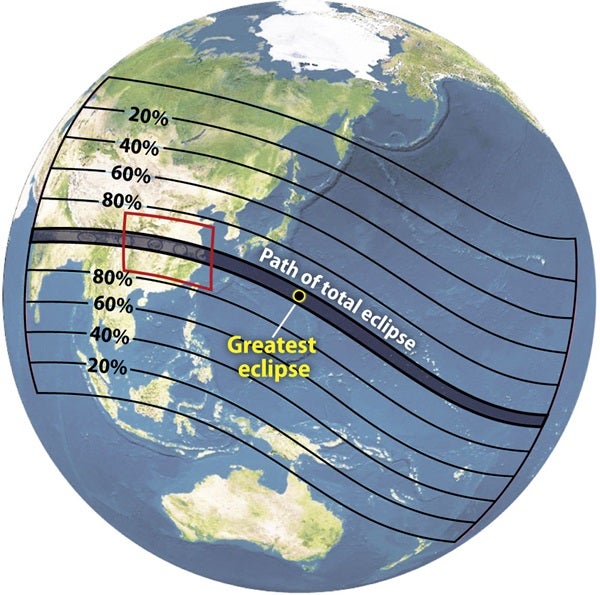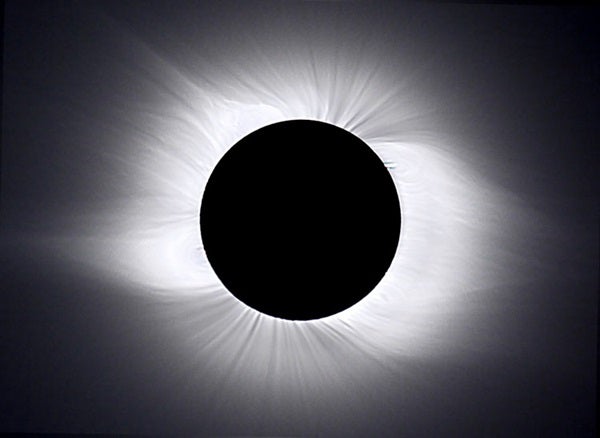- Blog — Astronomy editor reflects on “best eclipse” he’s ever seen July 23, 2009
- Blog — Post-eclipse sightseeing in WuhanJuly 23, 2009
- Press release — Total solar eclipse, July 22, 2009 July 16, 2009
- Image gallery — Solar eclipse 2009 trip
Sign up to receive Astronomy‘s FREE weekly e-mail newsletter!
The July 22, 2009, total solar eclipse begins at sunrise in India, and from there the Moon’s shadow zips across eastern Asia. The track crosses China for much of the morning before leaving the mainland near Shanghai. Observers just south of this city will experience nearly 6 minutes of totality. The track then moves out over the Pacific Ocean. Maximum eclipse occurs about 195 miles east of Iwo Jima, where observers will see the Sun disappear for 6 minutes and 39 seconds.
Astronomy magazine Editor David J. Eicher and Senior Editor Richard Talcott will witness the eclipse while cruising the Yangtze River.
Senior Editor Michael E. Bakich will watch the event from Nine Dragons Resort in Jiaxing, China.
All three will file regular updates and images from their trips.
In the July 2009 issue of Astronomy magazine, Senior Editor Richard Talcott previews the July 22 eclipse. The article includes a diagram of the eclipse’s path across eastern Asia and the western Pacific, eclipse facts, observing tips, a sky map highlighting the stars that will be visible during the totality, and stunning images of past eclipses.
Read “Get ready for the great Asian eclipse”.
We’ve placed this article, illustrations, and diagrams online for registered members of Astronomy.com. Registration is free and easy. Sign up today!

Using Astronomy.com’s interactive star chart — StarDome, we put together this animation of the eclipse as seen from Shanghai. The animation begins at first contact, 0h23m Universal Time, and ends at final contact, 3h01m. People in Shanghai will get to see more than 5 minutes of totality.
Sign up to receive Astronomy‘s FREE weekly e-mail newsletter!
- Track the path of the eclipse virtually with Astronomy.com’s interactive star chart — StarDome
- View and post eclipse images in our Online Reader Gallery
- Read our editors’ blogs from their trips to witness this historic eclipse
- Talk about your favorite eclipse experience in our Reader Forums
- Sign up to receive Astronomy‘s FREE weekly e-mail newsletter!












